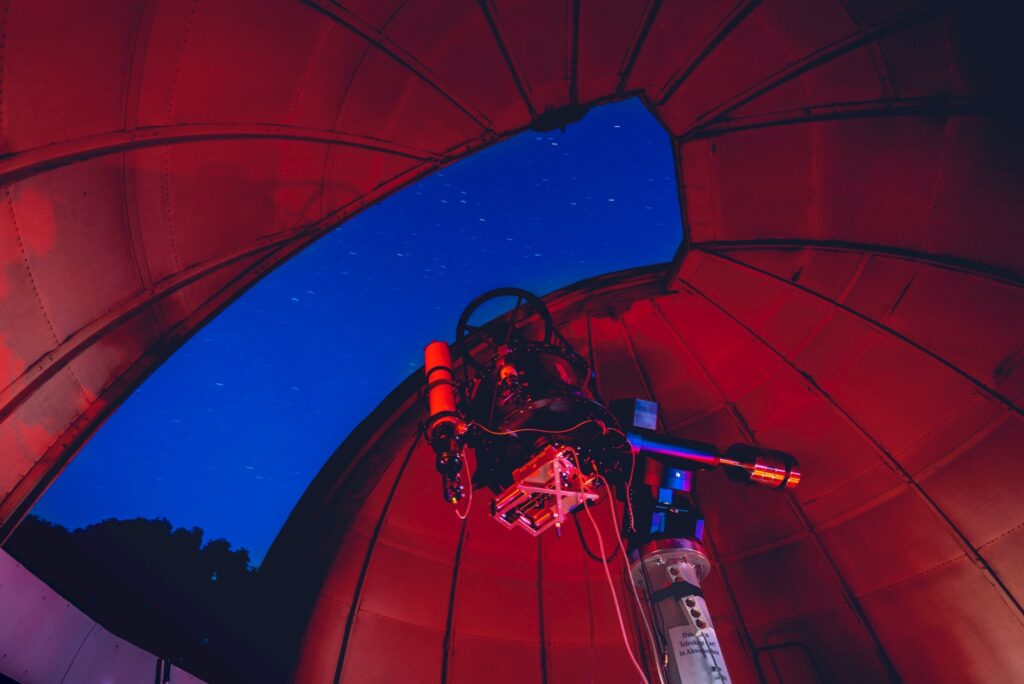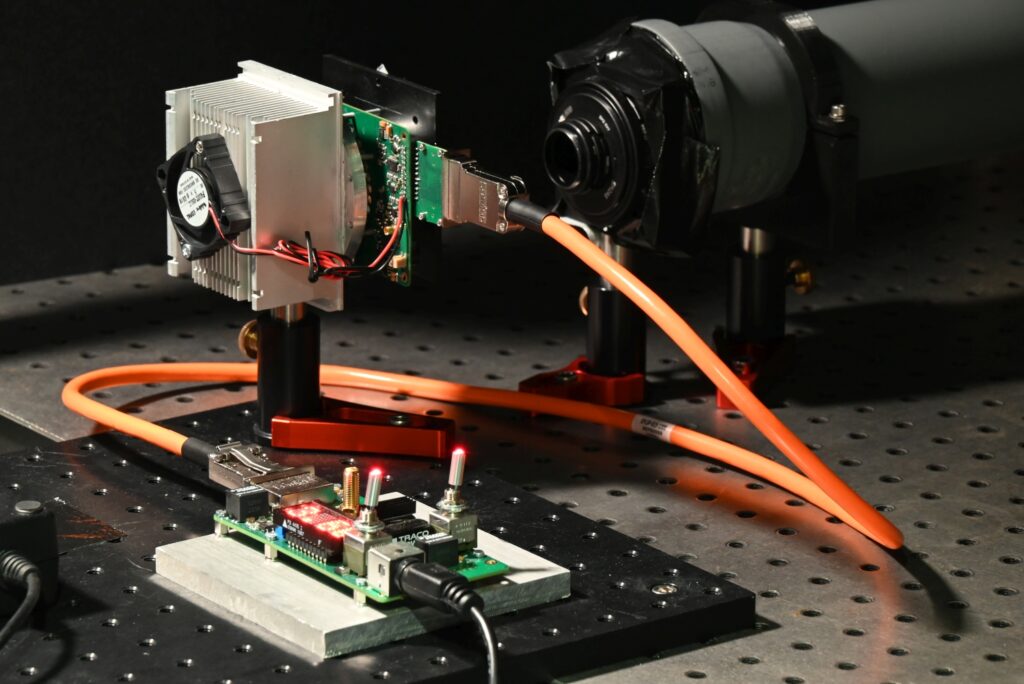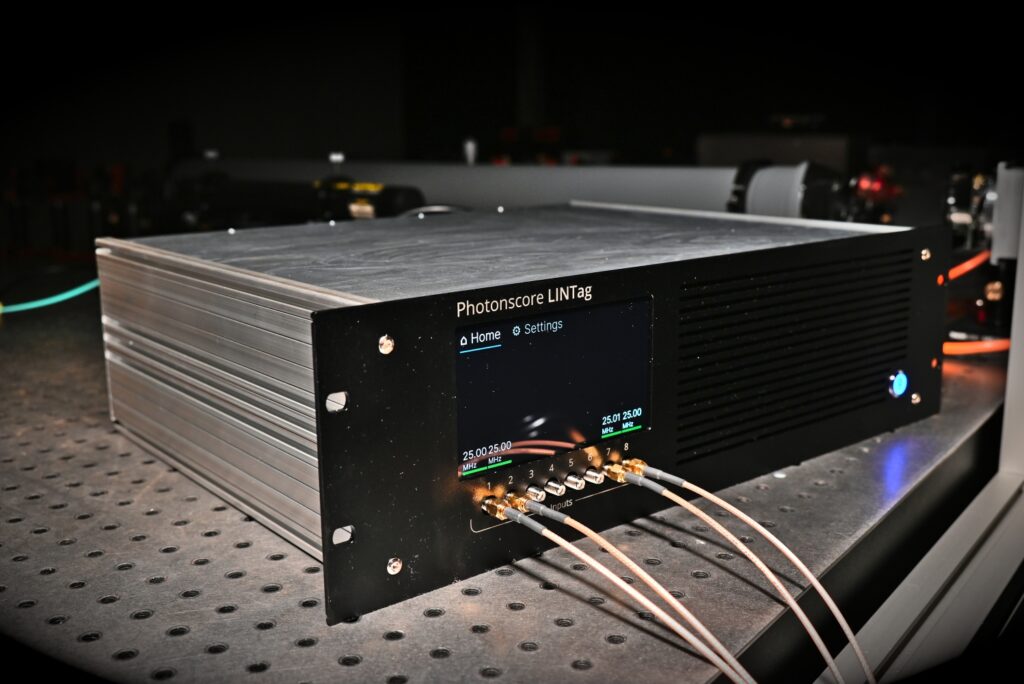Watching the stars by stopwatching photons
Imagine you have an exciting new research question in mind, but there is no fitting equipment to build the setup. So why not build it yourself? This question arose to a group of young scientists from FAU Erlangen-Nürnberg. Their goal: measuring the diameter of stars.
The first real image of a black hole, published in April 2019, caused quite a stir. A huge team of scientists used the Event Horizon Telescope – an interconnection of multiple radio telescopes spread all over the world – to get this impressive depiction. This method enabled the incredibly high resolution that was necessary to resolve the black hole. But many people may not know that this image is not an ordinary photograph created by visible light. Instead, what we see is the result of difficult calculations based on the detection of electromagnetic microwave radiation. Located at a wavelength of 1.3 millimeters, this radiation is far away from the visible spectrum at several hundred nanometers.
Still, also for visible light, one can use multiple spatially separated detectors to increase the maximum resolution of an astronomic image. In common setups, however, this so-called amplitude interferometry needs highly precise calibration of the optical components and path lengths. The mirrors and lenses have to be built and set up with an accuracy compared to as if you would measure the distance from Erlangen to the North Sea with a precision down to the thickness of a human hair. This is very expensive and complicated.

So, Stefan Richter, Verena Leopold and Sebastian Karl from the Quantum Optics & Quantum Information Group of Prof. Dr. Joachim von Zanthier at FAU Erlangen-Nürnberg chose a different approach: counting single light particles, so-called photons, and comparing their time of arrival. The original idea, namely intensity interferometry, was proposed and introduced more than 70 years ago by Hanbury Brown and Twiss. In detail, they set up spatially separated detectors and measured the differences in arrival times of incoming photons. Via this huge amount of data – millions of photons per detector per second – it is possible to calculate the shape of the light-emitting object e.g. a far-off star, but without the need of the high optical precision of amplitude interferometry. “But after the first experiments at the Bamberg observatory in 2020 and with regard to larger telescopes, we quickly noticed that the available hardware is just not capable to record and process the expected throughput of photons.”, Sebastian Karl states. They decided to team up with Photonscore GmbH – a single photon counting start-up from Magdeburg – to develop their own hardware, fulfilling the needed requirements for more advanced measurement campaigns.

Today, three years have passed and the self-developed time-tagger is fully functional (see here). “It is basically a super precise stopwatch able to determine the arrival times of up to 50 million photons per second at up to eight detectors simultaneously.”, as Stefan Richter explains. “The time resolution is in the range of less than 10 picoseconds, which is incredibly short.”, Verena Leopold adds. To get an impression: One picosecond compared to a second is the same as one second compared to 30 000 years. Regarding time spans, there is also a drawback of the new technique: compared to amplitude interferometry, a measurement takes more time. “That’s for example three nights instead of one. Still, we see a lot of potential for this technique, as it is not depending on ultra-precise optics and telescopes as amplitude interferometry does. Instead, it can be carried out by cheap light-bucket telescopes. Also larger distances between the detectors are possible with the electronic synchronization instead of the optical path length compensation of amplitude interferometry”, Stefan Richter concludes. In the end, LINTag is not limited to the very large scales of astronomy, as precise time tagging of photons also plays a major role on the tiny scales of quantum optics, quantum information processing like quantum key distribution, microscopy and in material characterization.

